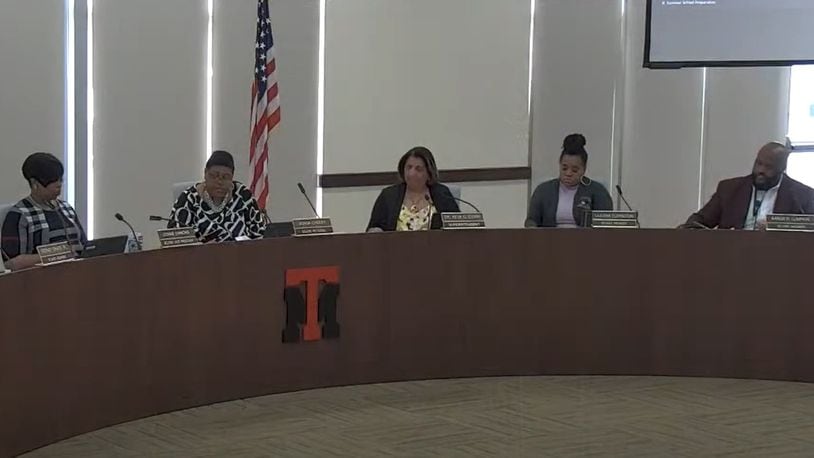It was not immediately clear if those 14 “reduction in force” staff cuts and the reductions of ESSER-funded staff are one and the same, or if they are separate, making the total more than 14. ESSER funds are the federal COVID-19 recovery funds given out to kindergarten through 12th grade schools in 2020, and that money runs out in September.
“It’s too early to make a definitive statement,” Cosby said in a statement to the Dayton Daily News on Tuesday afternoon. “We remain in close working contact with our union and our board regarding our next steps. The Trotwood-Madison City School District continues to prioritize prudent fiscal management of each state, federal, and local revenue source for the purpose of quality and effective education for our students.”
School board President Sonja Cherry declined to comment when reached by phone. Treasurer Janice Allen said in an email the district would respond to questions by the end of business on Wednesday.
Trotwood teachers’ union president Angela Bruno said morale was low Monday and the union had not heard about the possible reductions until the email was sent out over the weekend. Bruno said that a meeting with the union that Cosby mentioned in her letter had not yet been scheduled Monday.
In her letter, Cosby cited financial difficulties as the reason for the cuts. In a May 2 school board meeting where she presented an updated five-year financial forecast, district treasurer Allen said Trotwood has been in deficit spending.
The district’s five-year forecast shows ups and downs the past few years, but over three years from summer 2020 to summer 2023, Trotwood schools spent about $2.6 million more than they took in. According to the May 2 update of that forecast, the district expects to spend another $2.7 million more than its revenues for 2023-24.
That forecast suggests Trotwood schools’ deficit spending will continue. After a 4.8% increase in spending from last school year to this year, the district projects a larger 8.5% increase in expenditures in 2024-25. Both years’ increases come from higher wages and retirement/insurance benefits. The district’s forecast projects large deficits beyond 2025 as well, but those are harder to predict, as the employee union contract expires in summer 2025.
“I understand that this news is difficult for everyone involved,” Cosby said in her letter. “We are deeply connected as a community, and I want to assure you that I care so much about each and every one of you. This step is and always will be a measure of last resort.”
Despite the deficit spending the past few years, Trotwood projects to finish this school year with $23.8 million in the bank, or roughly 55% of a year’s spending, well above the district’s policy of carrying 60 days’ worth of expenses. A Dayton Daily News examination from 2021 found that the average Dayton-area school district had about 38% of a year’s spending in the bank.
Bruno noted there are specific reasons that teachers can be laid off, and lack of finances is one of those reasons. But she questioned the need and said she hoped to avoid layoffs in discussions with administration.
“We’re sitting on millions and millions of dollars,” she said. “How do you say we don’t have financial resources?”
Other Montgomery County districts, including Centerville and Northmont, have announced staffing cuts recently after voters in both districts rejected two rounds of school tax levies.
Trotwood receives more than 70% of its funding from the state, Allen said during the May 2 school board meeting, a much higher percentage than other local schools. Centerville, which is a wealthier district, gets almost 70% of its funding from local property taxes.
Bruno said district leadership had not responded to questions from staff Monday and were not in their offices.
The district was already facing a restructuring because two elementary school buildings were moving to two Grade 2-5 buildings, Bruno said. Staff also knew that ESSER funding would run out and said they asked leadership about ESSER jobs multiple times but did not get an answer.
Cosby’s letter to staff said, “I commit to you that we will conduct this process with respect and fidelity for all those involved.”
About the Author
